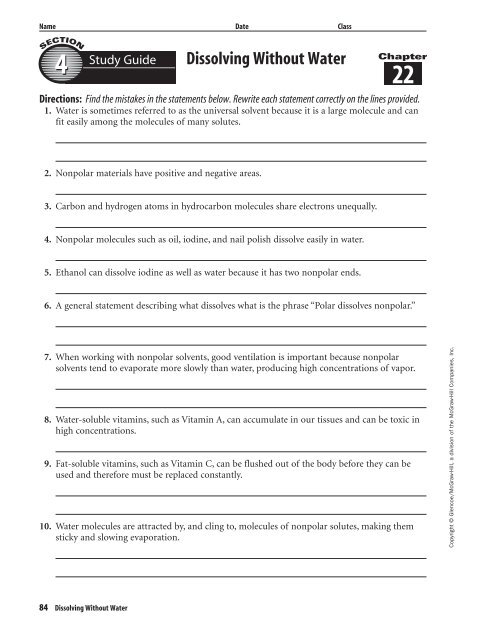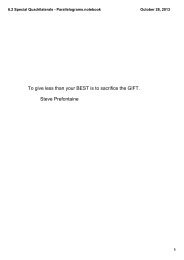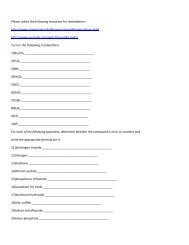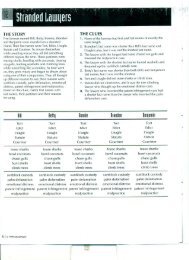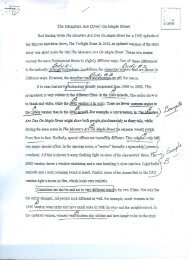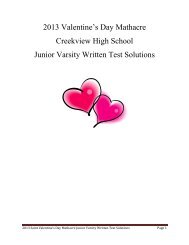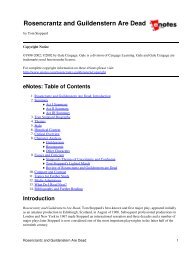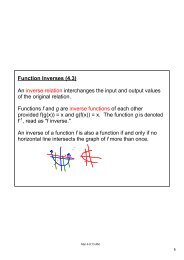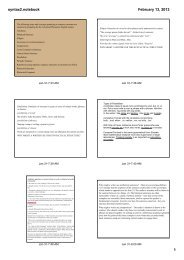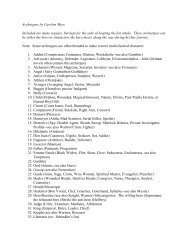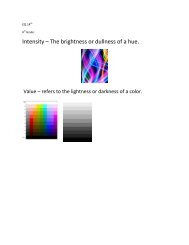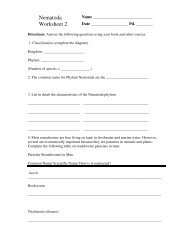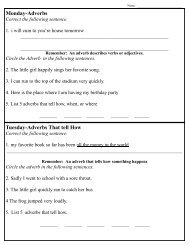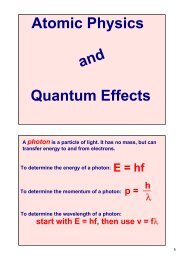You also want an ePaper? Increase the reach of your titles
YUMPU automatically turns print PDFs into web optimized ePapers that Google loves.
Name Date Class<br />
4<br />
84 Dissolving Without Water<br />
<strong>Study</strong> Guide<br />
Dissolving Without Water<br />
Chapter<br />
22<br />
Directions: Find the mistakes in the statements below. Rewrite each statement correctly on the lines provided.<br />
1. Water is sometimes referred to as the universal solvent because it is a large molecule and can<br />
fit easily among the molecules of many solutes.<br />
2. Nonpolar materials have positive and negative areas.<br />
3. Carbon and hydrogen atoms in hydrocarbon molecules share electrons unequally.<br />
4. Nonpolar molecules such as oil, iodine, and nail polish dissolve easily in water.<br />
5. Ethanol can dissolve iodine as well as water because it has two nonpolar ends.<br />
6. A general statement describing what dissolves what is the phrase “Polar dissolves nonpolar.”<br />
7. When working with nonpolar solvents, good ventilation is important because nonpolar<br />
solvents tend to evaporate more slowly than water, producing high concentrations of vapor.<br />
8. Water-soluble vitamins, such as Vitamin A, can accumulate in our tissues and can be toxic in<br />
high concentrations.<br />
9. Fat-soluble vitamins, such as Vitamin C, can be flushed out of the body before they can be<br />
used and therefore must be replaced constantly.<br />
10. Water molecules are attracted by, and cling to, molecules of nonpolar solutes, making them<br />
sticky and slowing evaporation.<br />
Copyright © Glencoe/McGraw-Hill, a division of the McGraw-Hill Companies, Inc.


